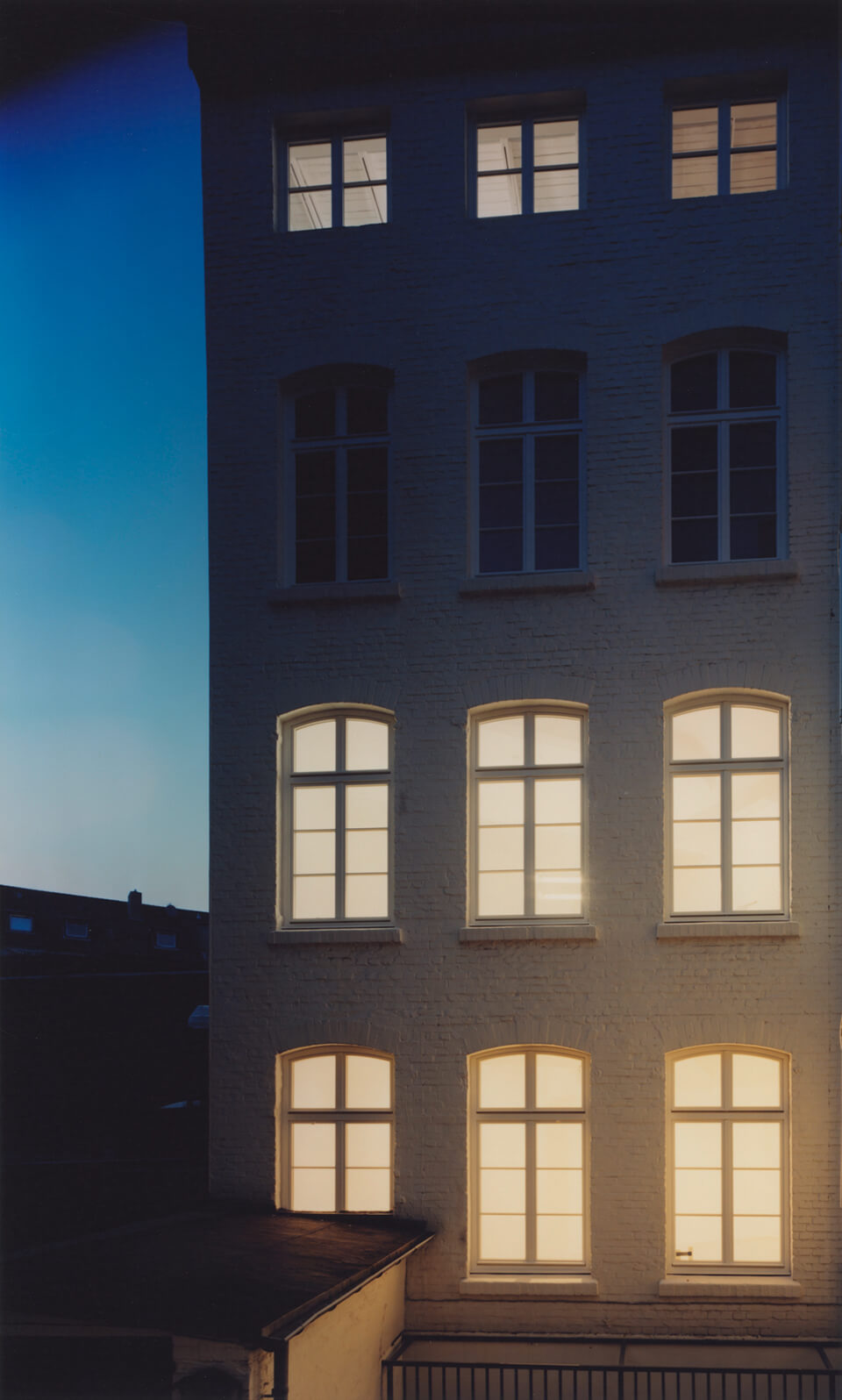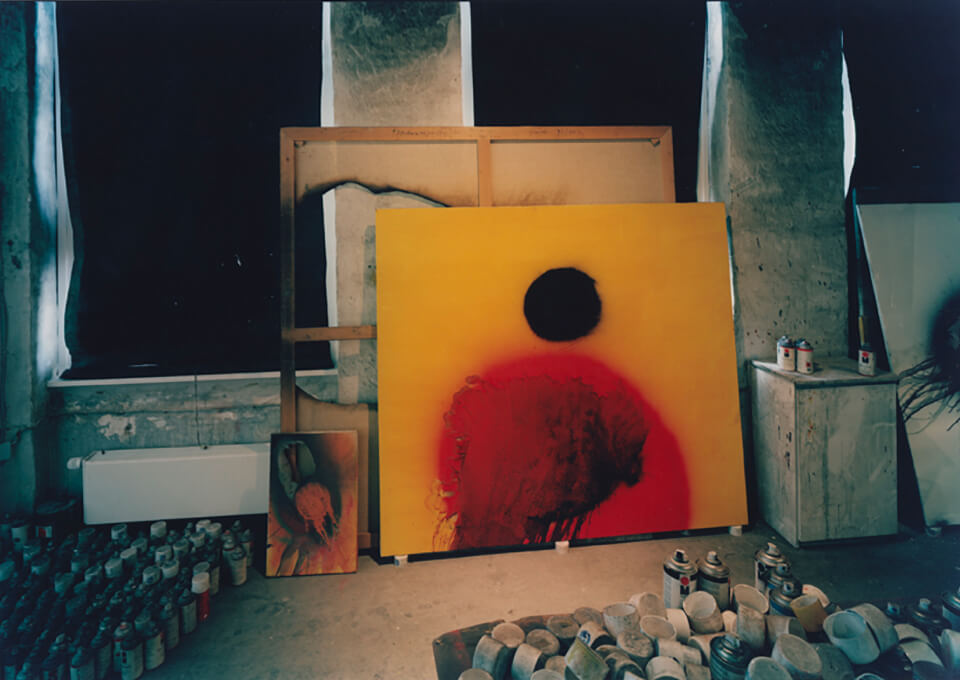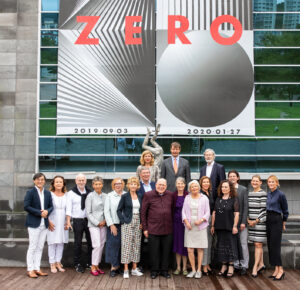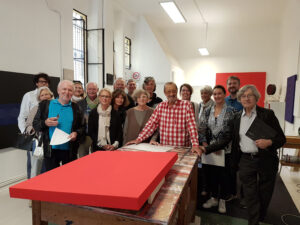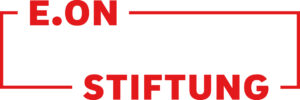HERAUSGEBER*IN

Hüttenstraße 104
40215 Düsseldorf
Germany
Tel.: +49 (0)211 59 80 59 77
Fax: +49 (0)211 59 80 59 76
Email: info@zerofoundation.de
VORSTAND
Dr. Friderike Bagel (Vorsitzende)
Claus Gielisch
Dr. Felix Krämer
Harry Schmitz
Prof. Dr. Jürgen Wilhelm
GESCHÄFTSFÜHRERIN
Dr. Barbara Könches
GESTALTUNG
Hugo Hoppmann
Berlin
www.hugohoppmann.com
Telefon:+49 1577 5333 762
E-Mail: hugo@hugohoppmann.com
Philipp Engel
Berlin
Telefon:+49 176 3409 5858
E-Mail: p.engel@hugohoppmann.com
Technische Umsetzung: designarr
E-Mail: hello@designarr.de
Domain-Provider: Mittwald
Aus Gründen der leichteren Lesbarkeit und der Nutzerfreundlichkeit wird auf die gleichzeitige Verwendung der männlichen und weiblichen Personenbezeichnung meist verzichtet.
URHEBERRECHT
Das Urheberrecht liegt bei © ZERO foundation sowie bei den Künstler*innen, Fotograf*innen, Grafiker*innen und Autor*innen. ©VG Bild-Kunst Bonn 2019 für die Kunstwerke von: Heinz Mack, Otto Piene, Günther Uecker
© VG Bild-Kunst Bonn, 2019 für die Fotografien von: Laurenz Berges, Heinz Mack, Franziska Megert
Wir haben uns mit großer Sorgfalt darum bemüht, alle Rechteinhaber*innen ausfindig zu machen. Sollten wir dennoch Rechteinhaber*innen übersehen oder falsch benannt haben, wenden Sie sich bitte an info@zerofoundation.de
Alle Texte, Bilder, Graphiken, Ton-, Video- und Animationsdateien sowie deren Anordnung innerhalb der Website unterliegen dem deutschen Urheberrecht und anderen Gesetzen zum Schutz geistigen Eigentums. Es ist nicht erlaubt Daten und Inhalte für kommerzielle oder andere Zwecke zu kopieren oder an Dritte weiterzuleiten.
Ausnahme hiervon sind Fotografien, Abbildungen und Texte, welche ausdrücklich für Zwecke der sachbezogener Berichterstattung in der Spalte „Presse“ angeboten werden
HAFTUNGSAUSSCHLUSS
Die ZERO foundation hat sich nach bestem Wissen und Gewissen um die Vollständigkeit und Richtigkeit der bereitgestellten Inhalte und Rechte bemüht. Eine Haftung hierfür wird nicht übernommen. Ebenso wenig haftet die ZERO foundation für Schäden infolge von Viren oder von Fremdsoftware.
Die ZERO foundation ergänzt und aktualisiert ihre Website in einem regelmäßigen Turnus, dadurch verändert sich auch das Informationsangebot.
HINWEISE ZUR VERARBEITUNG PERSONENBEZOGENER DATEN
Name und Anschrift des Verantwortlichen
Der Verantwortliche im Sinne der EU-Datenschutz-Grundverordnung (DSGVO) und anderer nationaler Datenschutzgesetze der Mitgliedsstaaten sowie sonstiger datenschutzrechtlicher Bestimmungen ist die:
ZERO foundation
Hüttenstraße 104,
40215 Düsseldorf
Tel.: +49(0)211 59 80 59 77
E-Mail: info@zerofoundation.de
Bei Anfragen zum Thema Datenschutz wenden Sie sich gern mit dem Stichwort „Datenschutz“ an: datenschutz@zerofoundation.de.
VERARBEITUNG PERSONENBEZOGENER DATEN IM RAHMEN UNSERER VERTRAGSBEZIEHUNG
KONKRETE VERARBEITUNG:
Wir verarbeiten Ihre personenbezogenen Daten ausschließlich zur Begründung, Durchführung und Abwicklung Ihres Vertragsverhältnisses mit uns. Darüber hinaus werden Ihre personenbezogenen Daten nur verarbeitet, sofern wir Ihre Einwilligung erhalten haben oder ein berechtigtes Interesse unsererseits besteht. Folgende personenbezogenen Daten werden von uns verarbeitet:
Vor- und Nachname, Adresse, Kontaktdaten (Telefon, E-Mail), ggf. Name der Firma/des Instituts
Ggf. weitere personenbezogene Daten, die wir im Rahmen der Vertragsbeziehung von Ihnen erhalten.
EMPFÄNGER DER DATEN:
Ihre personenbezogenen Daten werden an Dritte nur weitergegeben oder sonst übermittelt, soweit dies zur Erfüllung unserer vertraglichen Pflichten erforderlich ist oder Sie in eine Weitergabe eingewilligt haben.
Kommt es während eines bestehenden Vertragsverhältnisses oder nach Beendigung zu einer gerichtlichen Auseinandersetzung, werden die für die entsprechende Rechtsverfolgung notwendigen Daten an Inkassounternehmen, Rechtsanwälte, Gerichte und ggf. Vollstreckungsbeamte übermittelt.
RECHTSGRUNDLAGE FÜR DIE DATENVERARBEITUNG
Rechtsgrundlage für die Verarbeitung der personenbezogenen Daten sind Art. 6 Abs. 1 lit. b und f DSGVO. Sofern die Verarbeitung auf einer Einwilligung basiert, ist Rechtsgrundlage Art. 6 Abs. 1 lit. a DSGVO.
ZWECK DER DATENVERARBEITUNG
Die Erhebung Ihrer Daten erfolgt, zur Begründung, Durchführung und Beendigung des Vertragsverhältnisses, zur Korrespondenz mit Ihnen, um Sie, falls gewünscht, auf weitere passende Dokumente hinzuweisen um Rechercheaufträge von Ihnen zu bearbeiten zur Rechnungsstellung, ggf. zur Abwicklung von evt. vorliegenden Haftungsansprüchen sowie der Geltendmachung etwaiger Ansprüche gegen Sie.
DAUER DER SPEICHERUNG
Die personenbezogenen Daten, die wir im Rahmen des Vertragsverhältnisses von Ihnen erhalten, werden nach Beendigung des Vertrages gelöscht, sofern keine gesetzlichen Aufbewahrungsfristen, denen wir unterliegen, dem entgegenstehen. Handels- und steuerrechtliche Aufbewahrungsfristen betragen in der Regel 6 bis 10 Jahre.
VERARBEITUNG PERSONENBEZOGENER DATEN IM RAHMEN VON WERBUNG
BESCHREIBUNG UND UMFANG DER DATENVERARBEITUNG
Soweit zulässig verarbeiten wir folgende Daten zur persönlichen und werblichen Ansprache:
Anrede, Vorname, Nachname
E-Mail-Adresse(n),
Anschrift.
RECHTSGRUNDLAGE FÜR DIE DATENVERARBEITUNG
Rechtsgrundlage für die Verarbeitung und Speicherung der Daten ist Art. 6 Abs. 1 lit. f DSGVO. Soweit eine werbliche Ansprache per E-Mail erfolgt, erfolgt die Verarbeitung und Speicherung nur bei Vorliegen einer entsprechenden Einwilligung gemäß Art. 6 Abs. 1 lit. a DSGVO oder gemäß § 7 Abs. 3 UWG iVm Art. 6 Abs. 1 lit. f DSGVO.
ZWECK DER DATENVERARBEITUNG
Die Verarbeitung erfolgt, um Ihnen Informationen über unsere Stiftung übersenden zu können sowie um Sie bzw. Ihr Unternehmen über Veranstaltungen unserer Stiftung zu informieren
DAUER DER SPEICHERUNG
Die zu Werbezwecken von uns erhobenen personenbezogenen Daten werden während der Dauer der Vertragsbeziehung und bis zwei Jahre nach deren Beendigung gespeichert und danach gelöscht. Etwas anderes gilt, soweit wir gemäß Art. 6 Abs. 1 S. 1 lit. c DSGVO zu einer längeren Speicherung verpflichtet sind oder Sie in eine darüber hinausgehende Speicherung nach Art. 6 Abs. 1 S. 1 lit. a DSGVO eingewilligt haben.
IHRE RECHTE
Werden personenbezogene Daten von Ihnen verarbeitet, sind Sie Betroffener i.S.d. DSGVO und es stehen Ihnen folgende Rechte gegenüber dem Verantwortlichen zu:
AUSKUNFTSRECHT
Sie können von dem Verantwortlichen eine Bestätigung darüber verlangen, ob personenbezogene Daten, die Sie betreffen, von uns verarbeitet werden. Liegt eine solche Verarbeitung vor, können Sie von dem Verantwortlichen über folgende Informationen Auskunft verlangen:
die Zwecke, zu denen die personenbezogenen Daten verarbeitet werden; die Kategorien von personenbezogenen Daten, welche verarbeitet werden; die Empfänger bzw. die Kategorien von Empfängern, gegenüber denen die Sie betreffenden personenbezogenen Daten offengelegt wurden oder noch offengelegt werden;
ie geplante Dauer der Speicherung der Sie betreffenden personenbezogenen Daten oder, falls konkrete Angaben hierzu nicht möglich sind, Kriterien für die Festlegung der Speicherdauer;
das Bestehen eines Rechts auf Berichtigung oder Löschung der Sie betreffenden personenbezogenen Daten, eines Rechts auf Einschränkung der Verarbeitung durch den Verantwortlichen oder eines Widerspruchsrechts gegen diese Verarbeitung;
das Bestehen eines Beschwerderechts bei einer Aufsichtsbehörde;
alle verfügbaren Informationen über die Herkunft der Daten, wenn die personenbezogenen Daten nicht bei der betroffenen Person erhoben werden;
Ihnen steht das Recht zu, Auskunft darüber zu verlangen, ob die Sie betreffenden personenbezogenen Daten in ein Drittland oder an eine internationale Organisation übermittelt werden. In diesem Zusammenhang können Sie verlangen, über die geeigneten Garantien gem. Art. 46 DSGVO im Zusammenhang mit der Übermittlung unterrichtet zu werden.
RECHT AUF BERICHTIGUNG
Sie haben ein Recht auf Berichtigung und/oder Vervollständigung gegenüber dem Verantwortlichen, sofern die verarbeiteten personenbezogenen Daten, die Sie betreffen, unrichtig oder unvollständig sind. Der Verantwortliche hat die Berichtigung unverzüglich vorzunehmen.
RECHT AUF EINSCHRÄNKUNG DER VERARBEITUNG
Unter den folgenden Voraussetzungen können Sie die Einschränkung der Verarbeitung der Sie betreffenden personenbezogenen Daten verlangen:
wenn Sie die Richtigkeit der Sie betreffenden personenbezogenen für eine Dauer bestreiten, die es dem Verantwortlichen ermöglicht, die Richtigkeit der personenbezogenen Daten zu überprüfen;
die Verarbeitung unrechtmäßig ist und Sie die Löschung der personenbezogenen Daten ablehnen und stattdessen die Einschränkung der Nutzung der personenbezogenen Daten verlangen;
der Verantwortliche die personenbezogenen Daten für die Zwecke der Verarbeitung nicht länger benötigt, Sie diese jedoch zur Geltendmachung, Ausübung oder Verteidigung von Rechtsansprüchen benötigen, oder
wenn Sie Widerspruch gegen die Verarbeitung gemäß Art. 21 Abs. 1 DSGVO eingelegt haben und noch nicht feststeht, ob die berechtigten Gründe des Verantwortlichen gegenüber Ihren Gründen überwiegen.
Wurde die Verarbeitung der Sie betreffenden personenbezogenen Daten eingeschränkt, dürfen diese Daten – von ihrer Speicherung abgesehen – nur mit Ihrer Einwilligung oder zur Geltendmachung, Ausübung oder Verteidigung von Rechtsansprüchen oder zum Schutz der Rechte einer anderen natürlichen oder juristischen Person oder aus Gründen eines wichtigen öffentlichen Interesses der Union oder eines Mitgliedstaats verarbeitet werden.
Wurde die Einschränkung der Verarbeitung nach den o.g. Voraussetzungen eingeschränkt, werden Sie von dem Verantwortlichen unterrichtet bevor die Einschränkung aufgehoben wird.
RECHT AUF LÖSCHUNG
LÖSCHUNGSPFLICHT
Sie können uns verlangen, dass die Sie betreffenden personenbezogenen Daten unverzüglich gelöscht werden, und wir sind verpflichtet, diese Daten unverzüglich zu löschen, sofern einer der folgenden Gründe zutrifft:
Die Sie betreffenden personenbezogenen Daten sind für die Zwecke, für die sie erhoben oder auf sonstige Weise verarbeitet wurden, nicht mehr notwendig.
Sie widerrufen Ihre Einwilligung, auf die sich die Verarbeitung gem. Art. 6 Abs. 1 lit. a oder Art. 9 Abs. 2 lit. a DSGVO stützte, und es fehlt an einer anderweitigen Rechtsgrundlage für die Verarbeitung.
Sie legen gem. Art. 21 Abs. 1 DSGVO Widerspruch gegen die Verarbeitung ein und es liegen keine vorrangigen berechtigten Gründe für die Verarbeitung vor, oder Sie legen gem. Art. 21 Abs. 2 DSGVO Widerspruch gegen die Verarbeitung ein.
Die Sie betreffenden personenbezogenen Daten wurden unrechtmäßig verarbeitet.
Die Löschung der Sie betreffenden personenbezogenen Daten ist zur Erfüllung einer rechtlichen Verpflichtung nach dem Unionsrecht oder dem Recht der Mitgliedstaaten erforderlich, dem der Verantwortliche unterliegt.
Die Sie betreffenden personenbezogenen Daten wurden in Bezug auf angebotene Dienste der Informations-gesellschaft gemäß Art. 8 Abs. 1 DSGVO erhoben.
INFORMATION AN DRITTE
Haben wir die Sie betreffenden personenbezogenen Daten öffentlich gemacht und sind wir gem. Art. 17 Abs. 1 DSGVO zu deren Löschung verpflichtet, so trifft er unter Berücksichtigung der verfüg-baren Technologie und der Implementierungskosten angemessene Maßnahmen, auch technischer Art, um für die Datenverarbeitung Verantwortliche, die die personenbezogenen Daten verarbeiten, darüber zu informieren, dass Sie als betroffene Person von ihnen die Löschung aller Links zu diesen personenbezogenen Daten oder von Kopien oder Replikationen dieser personenbezogenen Daten verlangt haben.
AUSNAHMEN
Das Recht auf Löschung besteht nicht, soweit die Verarbeitung erforderlich ist zur Ausübung des Rechts auf freie Meinungsäußerung und Information;
zur Erfüllung einer rechtlichen Verpflichtung, die die Verarbeitung nach dem Recht der Union oder der Mitgliedstaaten, dem der Verantwortliche unterliegt, erfordert, oder zur Wahrnehmung einer Aufgabe, die im öffentlichen Interesse liegt oder in Ausübung öffentlicher Gewalt erfolgt, die dem Verantwortlichen übertragen wurde;
aus Gründen des öffentlichen Interesses im Bereich der öffentlichen Gesundheit gemäß Art. 9 Abs. 2 lit. h und i sowie Art. 9 Abs. 3 DSGVO;
für im öffentlichen Interesse liegende Archivzwecke, wissenschaftliche oder historische Forschungszwecke oder für statistische Zwecke gem. Art. 89 Abs. 1 DSGVO, soweit das unter Abschnitt a) genannte Recht voraussichtlich die Verwirklichung der Ziele dieser Verarbeitung unmöglich macht oder ernsthaft beeinträchtigt, oder
zur Geltendmachung, Ausübung oder Verteidigung von Rechtsansprüchen.
RECHT AUF UNTERRICHTUNG
Haben Sie das Recht auf Berichtigung, Löschung oder Einschränkung der Verarbeitung geltend gemacht, sind wir verpflichtet, allen Empfängern, denen die Sie betreffenden personenbezogenen Daten offengelegt wurden, diese Berichtigung oder Löschung der Daten oder Einschränkung der Verarbeitung mitzuteilen, es sei denn, dies erweist sich als unmöglich oder ist mit einem unverhältnismäßigen Aufwand verbunden.
Ihnen steht gegenüber dem Verantwortlichen das Recht zu, über diese Empfänger unterrichtet zu werden.
RECHT AUF DATENÜBERTRAGBARKEIT
Sie haben das Recht, die Sie betreffenden personenbezogenen Daten, die Sie uns bereitgestellt haben, in einem strukturierten, gängigen und maschinenlesbaren Format zu erhalten. Außerdem haben Sie das Recht diese Daten einem anderen Verantwortlichen ohne Behinderung durch den Verantwortlichen, dem die personenbezogenen Daten bereitgestellt wurden, zu übermitteln, sofern die Verarbeitung auf einer Einwilligung gem. Art. 6 Abs. 1 lit. a DSGVO oder Art. 9 Abs. 2 lit. a DSGVO oder auf einem Vertrag gem. Art. 6 Abs. 1 lit. b DSGVO beruht und die Verarbeitung mithilfe automatisierter Verfahren erfolgt.
In Ausübung dieses Rechts haben Sie ferner das Recht, zu erwirken, dass die Sie betreffenden personenbezogenen Daten direkt von einem Verantwortlichen einem anderen Verantwortlichen übermittelt werden, soweit dies technisch machbar ist. Freiheiten und Rechte anderer Personen dürfen hierdurch nicht beeinträchtigt werden.
Das Recht auf Datenübertragbarkeit gilt nicht für eine Verarbeitung personenbezogener Daten, die für die Wahrnehmung einer Aufgabe erforderlich ist, die im öffentlichen Interesse liegt oder in Ausübung öffentlicher Gewalt erfolgt, die dem Verantwortlichen übertragen wurde.
RECHT AUF WIDERRUF DER DATENSCHUTZRECHTLICHEN EINWILLIGUNGSERKLÄRUNG
Sie haben das Recht, Ihre datenschutzrechtliche Einwilligungserklärung jederzeit zu widerrufen. Durch den Widerruf der Einwilligung wird die Rechtmäßigkeit der aufgrund der Einwilligung bis zum Widerruf erfolgten Verarbeitung nicht berührt. Zum Widerruf einer Einwilligung oder für einen Widerspruch genügt eine einfache Nachricht per E-Mail an uns: datenschutz@zerofoundation.de
WIDERSPRUCHSRECHT
Sie haben das Recht, aus Gründen, die sich aus ihrer besonderen Situation ergeben, jederzeit gegen die Verarbeitung der Sie betreffenden personenbezogenen Daten, die aufgrund von Art. 6 Abs. 1 lit. e oder f DSGVO erfolgt, Widerspruch einzulegen; dies gilt auch für ein auf diese Bestimmungen gestütztes Profiling.
Der Verantwortliche verarbeitet die Sie betreffenden personenbezogenen Daten nicht mehr, es sei denn, er kann zwingende schutzwürdige Gründe für die Verarbeitung nachweisen, die Ihre Interessen, Rechte und Freiheiten überwiegen, oder die Verarbeitung dient der Geltendmachung, Ausübung oder Verteidigung von Rechtsansprüchen.
Sie haben die Möglichkeit, im Zusammenhang mit der Nutzung von Diensten der Informationsgesellschaft – ungeachtet der Richtlinie 2002/58/EG – Ihr Widerspruchsrecht mittels automatisierter Verfahren auszuüben, bei denen technische Spezifikationen verwendet werden.
RECHT AUF BESCHWERDE BEI EINER AUFSICHTSBEHÖRDE
Unbeschadet eines anderweitigen verwaltungsrechtlichen oder gerichtlichen Rechtsbehelfs steht Ihnen das Recht auf Beschwerde bei einer Aufsichtsbehörde, insbesondere in dem Mitgliedstaat ihres Aufenthaltsorts, ihres Arbeitsplatzes oder des Orts des mutmaßlichen Verstoßes, zu, wenn Sie der Ansicht sind, dass die Verarbeitung der Sie betreffenden personenbezogenen Daten gegen die DSGVO verstößt.
Die Aufsichtsbehörde, bei der die Beschwerde eingereicht wurde, unterrichtet den Beschwerdeführer über den Stand und die Ergebnisse der Beschwerde einschließlich der Möglichkeit eines gerichtlichen Rechtsbehelfs nach Art. 78 DSGVO.
